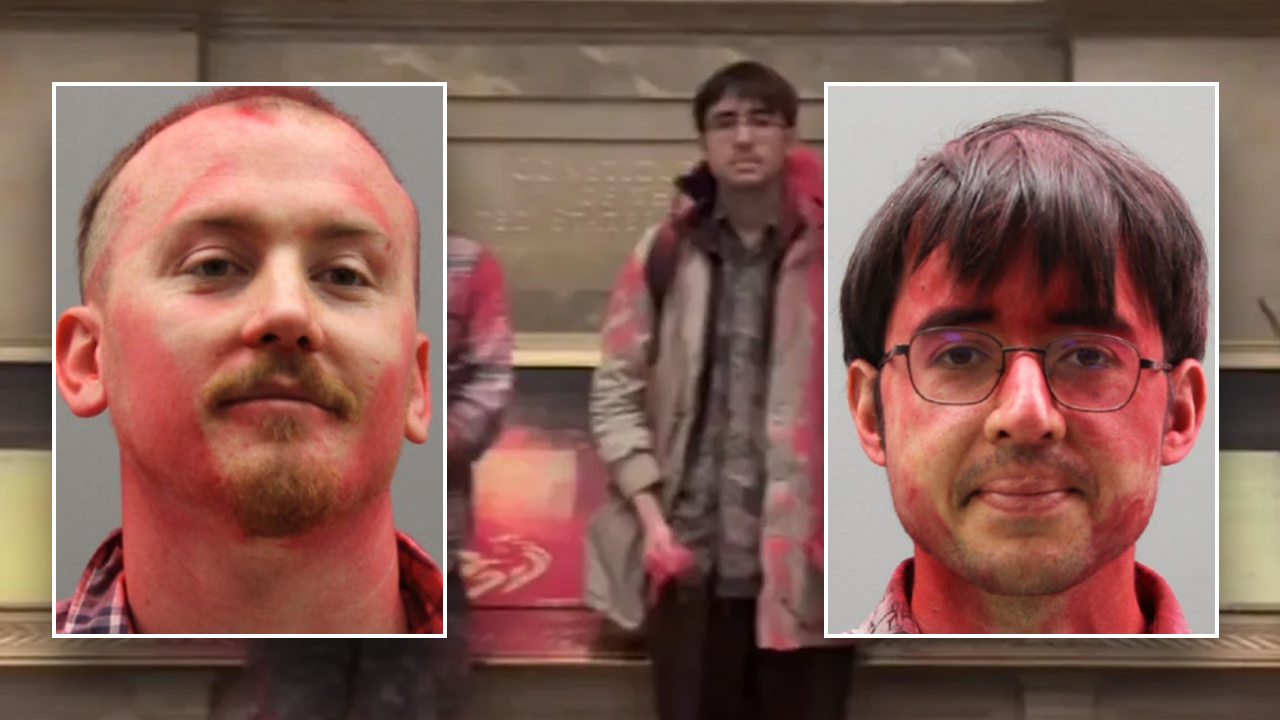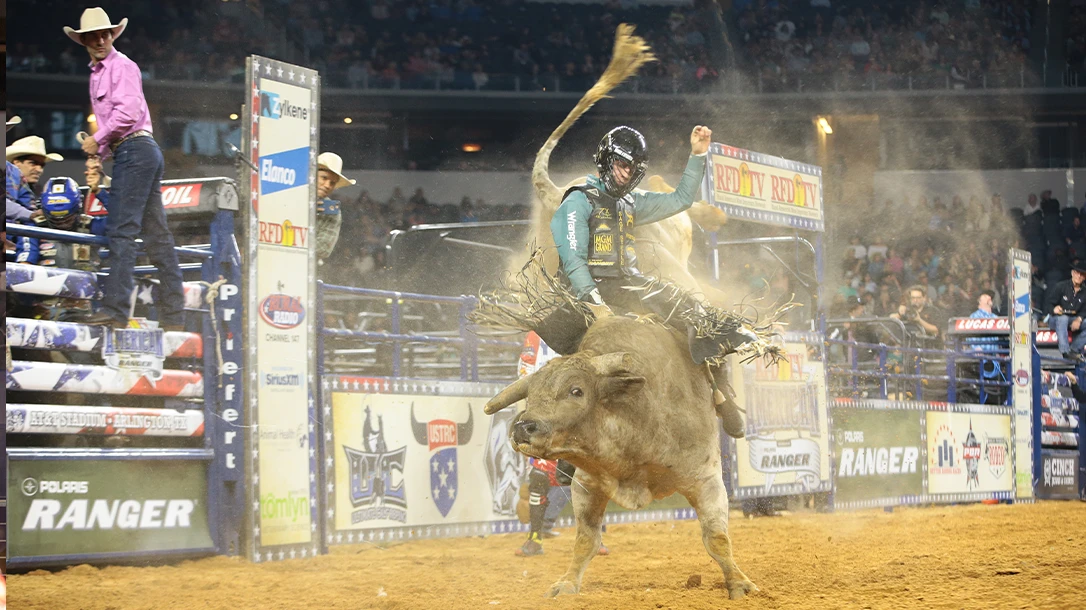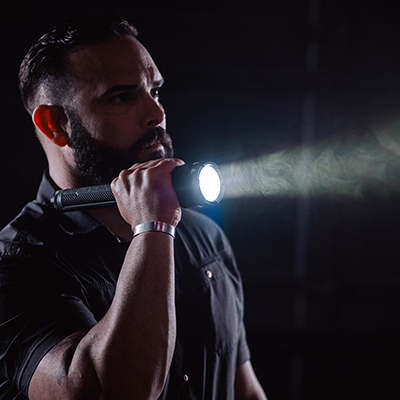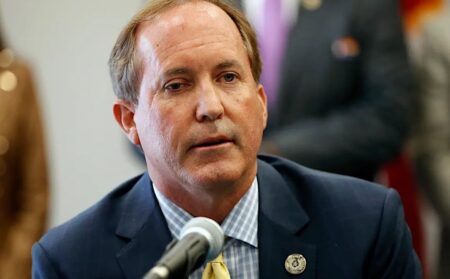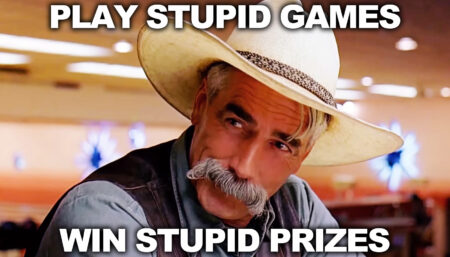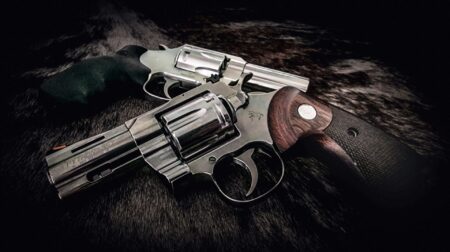Arlington, Texas, may be home to the Dallas Cowboys, but on March 6-7, 2021, the colossal AT&T Stadium there attracted cowboys of a different sort—real bull and bronc riders looking to hang tough, not get hurt, and cash a big check. The home of Dak Prescott and Ezekiel Elliott gave way to these riders and ropers as The American Rodeo came to town, offering plenty of thrills, athleticism, and some badass bull riding.
Bull Riding is a Way of Life
Bull riding remains one of the favorite events among fans and takes plenty of guts. Strapping yourself to an angry, 1,500-pound animal isn’t everyone’s idea of a good time. But for those riders in Arlington, it is a way of life, and big money is on the line. The winning rider in each event takes home six figures, with a check of $100,000 going to the one cowboy who can hang on and do so in style.
The Young Gun
For many, rodeo may be a peripheral activity relegated to history, but the sport remains alive and well. Today’s riders can earn quite a living and have plenty of opportunities to shine. The sport has evolved, and today, it has major sponsors, considerable media coverage, and plenty of fans. Bull rider Colten Fritzlan, 21, was one of those looking for some riding glory in Arlington. Originally from Rifle, Colorado, he now lives in Lipan, Texas, about an hour west of Fort Worth.
There is no shortage of rodeos for riders like Fritzlan to ply his craft at, but The American Rodeo is something special and has some of the biggest payouts for cowboys and cowgirls. The location itself only adds to the prestige.
A visit on the day of the finals might dispel some preconceptions about the sport. Much of the action plays out like a rock concert, with a DJ spinning anything from AC/DC and Van Halen to Lady Gaga and country hits. It’s a patriotic, cowboy-boot-clad crowd, although it is a bit smaller these days post-pandemic. The action, however, is fast and furious.
World Class Athletes
The American Rodeo attracts some of the world’s most fearless bull and bronc riders. The average bull weighs about 1,500 pounds, and staying atop one of these animals for 8 seconds is easier said than done. At Arlington, Fritzlan rolled out an impressive performance. He led for much of the week’s prelims, including coming into the final day.
Fritzlan grew up in a ranching family, and being around horses and cows was just a part of life. Even from an early age, getting on top of a bull interested Fritzlan, and by age 7, the rodeo was for him. Most people have no interest in getting strapped to an almost 2-ton, pissed-off bull. How did this cowboy overcome those fears?
“You just do it more and more,” says Fritzlan, the 2020 Pro Rodeo Cowboy Association Rookie of the Year. “When you’ve done this your whole life, you can channel that fear and nervousness into adrenaline. Your outcome will be way better than holding on to that fear of failure.”
That attitude paid off at The American Rodeo when he found himself in the finals as one of the favorites. Before a big event, Fritzlan tries to stay focused, and he keeps in top shape. That’s a big part of the event for most riders—slowing down the lightning-quick action so that when that gate door swings open, a cowboy has already visualized and rehearsed the entire scene beforehand.
“The sport happens so fast, and if you can slow it down and perfect what you need to work on each day,” Fritzlan says, “it’ll show up on the weekend.”
The Veteran
Even though he is almost two decades younger, Sage Kimzey may be the Tom Brady of the rodeo world. The six-time bull riding world champion has scored titles all over the country. Kimzey is originally from Strong City, Oklahoma, and is now living in Salado, Texas, and has ridden on the pro rodeo circuit since 2013. Life on top of a bull has certainly paid off for the 26-year-old.
A win at the Texas event would mean adding another prestigious accomplishment to that resumé. Rodeo runs in Kimzey’s family; his father served as a bullfighter and rodeo clown in the 1980s, and his mother also competed. Life on the ranch meant riding horses and working cattle, and even at an early age, Kimzey competed in the rodeo arena.
At age 5, a calf bucked Kimzey off and then dragged him around the arena. His parents believed the experience might have meant his rodeo career would be short-lived. Instead, the youngster grinned and couldn’t wait to try again.
“I just always wanted to be a cowboy,” Kimzey says. “even competing in little junior rodeos when I was 4 years old. I worked all the events growing up, but bull riding was always my favorite. The older I got, the more I just focused on bull riding.”

This Calling
By the time he was a senior in high school, the sport consumed him. Kimzey attended college for two years but left his studies behind as he began earning more money in rodeo. Keeping up with class while riding bulls and broncs wasn’t working.
Kimzey says that staying in the middle of the bull is key when he is atop a raging bull. All bulls start to spin, and losing one’s balance is easy, especially when one move might be followed by another more random move by the bull. The center of the bull is “the eye of the hurricane.”
While there may be numerous forces at play for those 8 seconds of a bull ride, it is the middle of the bull’s back that stays calm.
“It’s just extremely hard to find that spot,” Kimzey says. “Balance, reaction, timing, and the feel for an animal are all important.”
Finding that sweet spot has been part of doing business for Kimzey at the American Rodeo in Arlington. He’s won the bull riding event twice before and hopes for another victory in this finals.
Bumps And Bruises
Riders may be fearless and skilled, but this sport exposes contestants to plenty of danger. An occasional ER visit also comes with the territory; if it hasn’t happened to a rider yet, it will probably only be a matter of time. Doctors have reconstructed Fritzlan’s elbow four times, and a bull also once stepped on his leg and broke it. This led to a bone infection, and what should have been a six-week recovery turned into a much longer ordeal.
Kimzey has also experienced his share of rodeo combat wounds. A bull stepped on his calf when he was a high school sophomore, leading to a condition known as “compartment syndrome.” According to the American Academy of Orthopaedic Surgeons, this is a “painful condition that occurs when pressure within the muscles builds to dangerous levels. This pressure can decrease blood flow, which prevents nourishment and oxygen from reaching nerve and muscle cells.”
Long Term Injuries
This syndrome can lead to permanent muscle damage. Because of the internal bleeding in his calf, doctors sliced through each side of it to allow his limb to bleed out for a few days to relieve the pressure, and he spent four days in the hospital. Beyond that, Kimzey has suffered broken arms, dislocated shoulders, a fractured pelvis, ankle surgery, and more. Injuries certainly aren’t the goal, but they are a big part of the sport.
“If everything goes smoothly, it’s more of a fine dance,” Kimzey says of riding a bull. “It can be pretty tough too.”
That last part may be a bit of an understatement. While bareback riders may experience more wear and tear, bull riding comes with the ever-present chance of causing major physical damage. Because of the dangers involved, professional bullriding careers flame out fairly quickly. Most bull riders don’t compete much past age 30—and some don’t even get that far. Fritzlan, however, plans to ride his current success as long as he can. “I don’t have any sense of slowing down,”he says. “I’m healthy, and I’m ready to go.”

Ride To Win
At The American Rodeo, cowboys don’t just face the best riders in the world—they also face the best bulls. After spending as many as 200 days on the road a year, many of the competitors know each other quite well. Some travel in groups to defray costs and even hang out together between events. There is plenty of camaraderie, but these guys are all business when the action is underway.
In this man-versus-beast showdown, conquering the beast isn’t easy. Unlike some other rodeo events, seeing a cowboy hit the dirt without completing an 8-second ride is common. In the finals this year, a bull launched one rider right into the metal rails surrounding the arena, and he landed with what looked to be a painful thud.
In 2021’s The American Rodeo finals, Kimzey experienced some early troubles. He slipped off the right side on one ride just after the chute opened. Shortly afterward, Fritzlan got his shot. He locked onto the back of the animal and seemed unshakable, with one hand in the air and one clutching the bull rope. Fritzlan’s ride was artistry in motion, and after 8 seconds, he hit the ground and pumped his fists in celebration. The attempt drew an impressive score of 90.25 and plenty of cheers from the fans.

The American Rodeo
But Kimzey had one last bull to ride, hoping to take home the cash. Getting bucked off wasn’t even a question for him. The bull kicked and swiveled in a Herculean effort to launch Kimzey into the dirt below, but Kimzey hung on, however, warding off every effort by the beast to separate the cowboy from its back. After 8 seconds it was all over, but would it be enough?
Despite his impressive finish, Kimzey came up short with a score of 89. Nevertheless, the runner-up spot at The American Rodeo earned him a $25,000 payday and plenty of applause from the fans as well. And even though the check and fan appreciation are meaningful, if bittersweet, for Kimzey, they don’t replace the title and championship buckle. However, the chance to compete again for top place at another rodeo would only be a few days away.
For Fritzlan, though, the win is the biggest of his career so far, and it put him squarely on the map of the world’s top bull riders. Without a doubt, he will savor it for years to come. “It was definitely life-changing and got me really fired up for the start of this new year,” Fritzlan says. “I’m just looking forward to attending each event and trying to do my job to keep winning.”
Nothing sticks out too much in his mind about that last ride at The American Rodeo. Everything seemed to come together, just like he had pictured in his mind so many times before—even down to the bull itself. “I just did the job at hand,” he says. “I’ve seen that bull numerous times and always won a lot of money on him. I was stoked to have him and just kept it simple.”
Read the full article here

